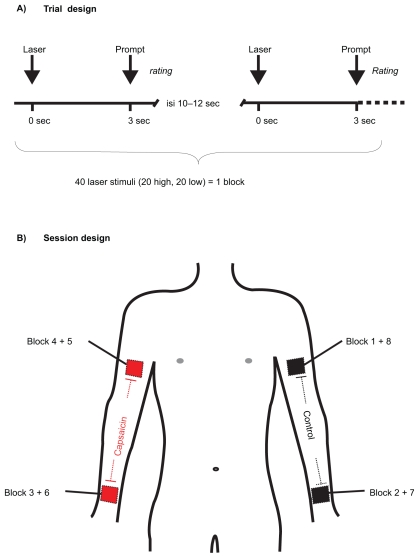Figure 1.
The test procedure comprised eight blocks consisting of 40 laser stimuli of two intensities. Section A) indicates the trial design. The laser was given at time point zero of each trial. Three seconds after the pain stimulus a tone prompted the subjects to verbally rate the perceived pain. Section B) shows the experimental procedure of all eight blocks. One arm (left or right, counterbalanced across subjects) was treated proximally as well as distally with topical capsaicin (0.1% dissolved in 70% ethyl alcohol). The session started with stimulation of the proximal site of the control arm (Block 1) and proceeded with Block 2 at the distal control site (distance between proximal and distal sites = 30 cm). Laser stimuli of Block 3 were applied to the capsaicin treated distal forearm, followed by Block 4 at the capsaicin treated proximal upper arm. 1 repetition, the sites were stimulated in reverse block order, thus started at the proximal capsaicin-treated site and ended at the proximal control site. This procedure minimized confounding effects of site with habituation.

